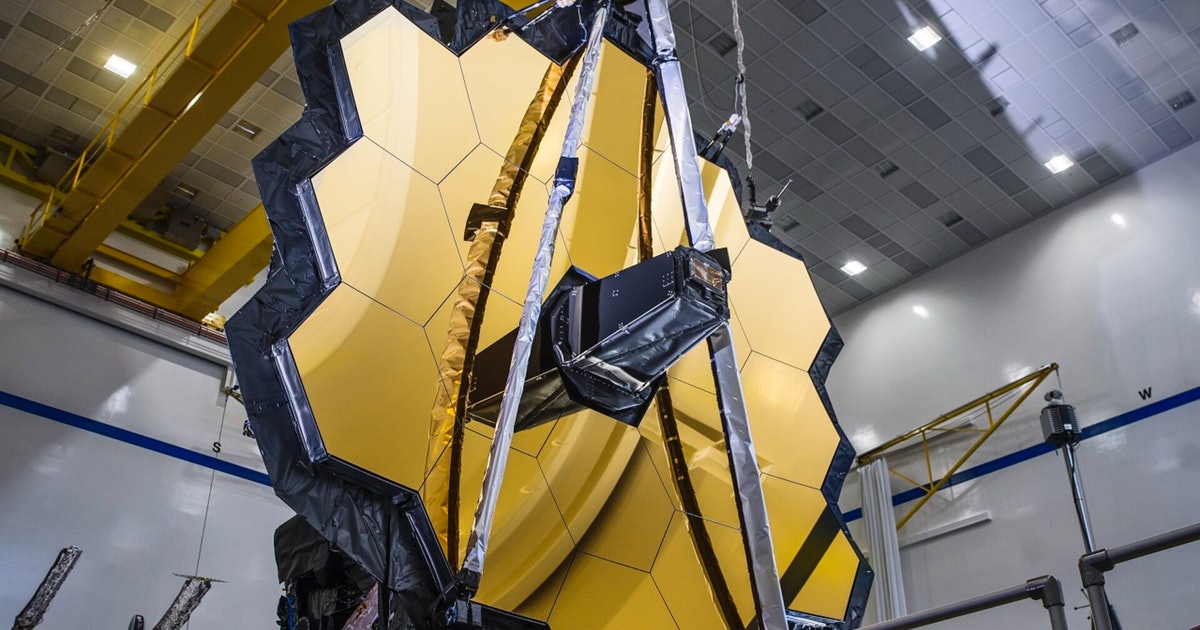
Jaw-dropping image shows the Webb telescope 1 million miles from Earth
The James Webb Space Telescope (JWST) has made it into position — and there are pictures to prove it.
On Tuesday, the Virtual Telescope project released an image of the new telescope among the stars. The 300-second exposure, captured with the “Elena” telescope, shows the project around 1.4 million kilometers (869,919 miles) from Earth.
Want to find out more about what’s going on in the world of space? Subscribe to MUSK READS+ for exclusive interviews and analysis about spaceflight, electric cars, and more.
The image captures the latest stage in the ambitious project’s story, a joint venture between NASA, the European Space Agency, and the Canadian Space Agency.
James Webb Space Telescope: What to know
The telescope features a 21-foot, four-inch-thick set of 18 mirrors coated in gold. This bounces light into an infrared sensor. Its ultra-wide perspective enables it to observe around a third of the sky at a given time.
It’s nearly three times bigger than the Hubble Space Telescope, which launched in 1990 and has provided some of the most dramatic images of space.
NASA will use the new telescope to reveal more about the origins of the universe. It could also provide insights into far-flung exoplanets that could hold life. It’s also expected to help researchers understand Sagittarius A*. Scientists have yet to image what they believe is a supermassive black hole at the center of the galaxy.
The telescope launched on December 25, 2021, using an Ariane 5 rocket taking off from Europe’s Spaceport in French Guiana. It took around a month to reach its final destination, the L2 Lagrange point between the Sun and the Earth.
This point is where gravitational forces between the two are stable. It enables the telescope to face away from the Sun throughout its operation, protecting its instruments. The positioning also means that the telescope will stay out of the shade of both the Earth and Moon. The Hubble Space Telescope, meanwhile, moves in and out around every 90 minutes.
Operations are expected to begin in around five months’ time.
It’s expected that JWST will operate for around five years. However, NASA revealed after the launch that the telescope saved more of its fuel than it expected. Where NASA expected JWST to use 146 kilograms of its 300 kilograms of fuel to move into position, it only used 32 percent of that allocation. Mike Menzel, NASA mission systems engineer for the James Webb Space Telescope, told Inverse that this could mean it has a lifespan of more than 20 years.
The final moment of repositioning was a key moment for the project’s success.
“We’re pretty excited that the spacecraft portion has been going as well as it has, and looking forward to the science instruments,” Amy Lo, JWST vehicle engineering lead at Northrop Grumman, said during a press conference on Monday.
SUBSCRIBE TO MUSK READS+, A PREMIUM NEWSLETTER THAT COVERS THE WORLDS OF ELON MUSK, SPACEX, TESLA, AND EVERYTHING BETWEEN.
The James Webb Space Telescope (JWST) has made it into position — and there are pictures to prove it. On Tuesday, the Virtual Telescope project released an image of the new telescope among the stars. The 300-second exposure, captured with the “Elena” telescope, shows the project around 1.4 million kilometers (869,919 miles) from Earth. Want…
The James Webb Space Telescope (JWST) has made it into position — and there are pictures to prove it. On Tuesday, the Virtual Telescope project released an image of the new telescope among the stars. The 300-second exposure, captured with the “Elena” telescope, shows the project around 1.4 million kilometers (869,919 miles) from Earth. Want…